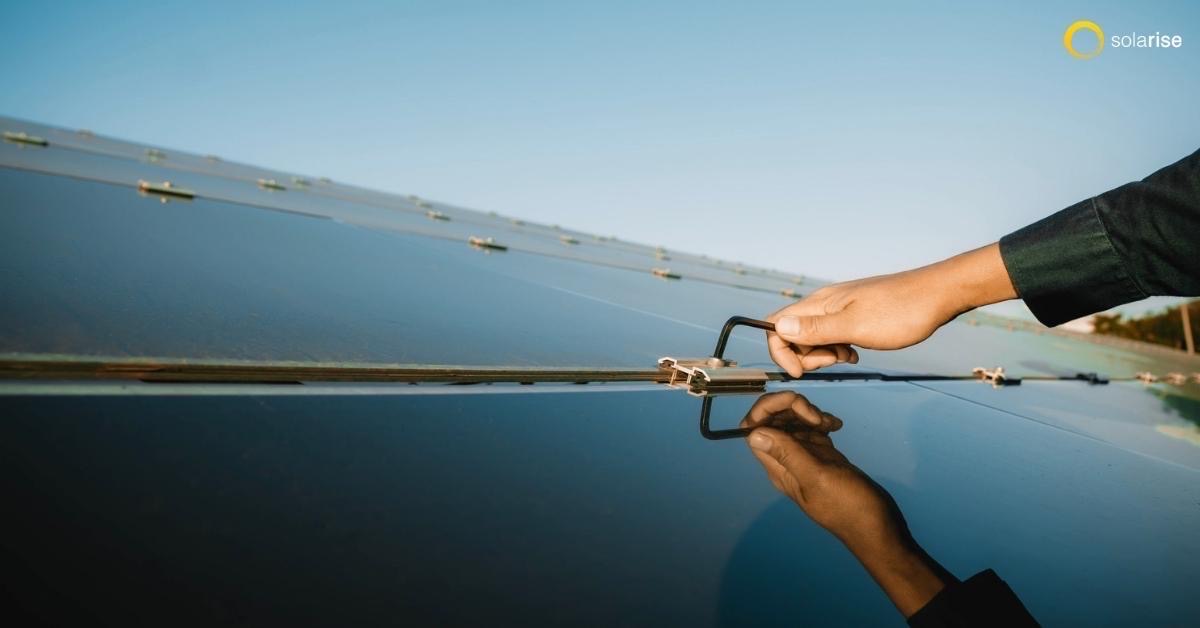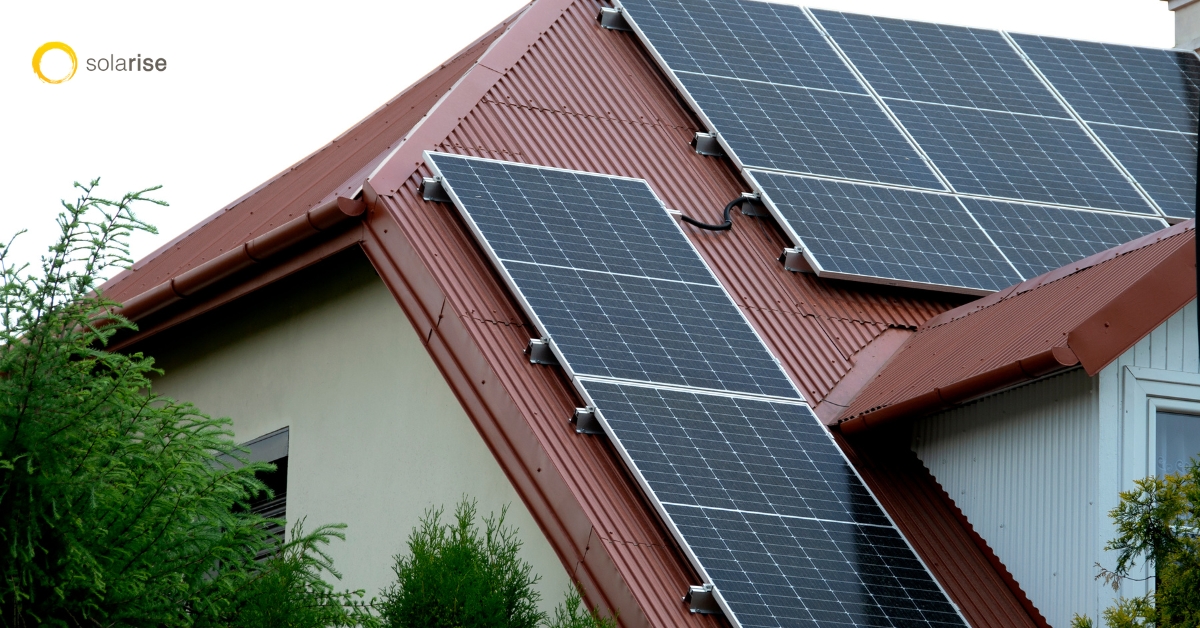A solar panel is a composition of solar photovoltaic (PV) cells that absorb light from the sun and convert it into electricity. Typically, solar cells are made of silicon. There are two common technologies used for creating solar cells for panels. Knowing the pros and cons of using the most prominent solar technologies can be important to your purposes for using solar energy. So, it’s monocrystalline vs. polycrystalline solar panels for consumers interested in going solar. Which of these two primary versions makes the best solar panels for home energy?
Two Most Common Types of Solar Panels
Silicon is used to build energy-efficient solar panels for homes. The silicon solar cells in the panels are developed with both a positive and a negative layer in order to generate an electrical field. It’s not unlike the way a battery works to create power. The majority of today’s most commonly installed solar panels are built from either polycrystalline or monocrystalline silicon cells.
Monocrystalline Solar Panels
This widely used form of silicon solar panel composition has a distinct appearance and a higher efficiency rating than the polycrystalline alternative. This solar technology has been used for a long time in the industry and has a well-established track record of long-term durability. This type of panel also costs more than the other most popular panel type we're considering here.
- Construction: A silicon cell consists of a single crystal. That enables electrons to move more freely, thereby improving electricity generation efficiency.
- Appearance: Monocrystalline solar cells have a consistent pattern of black squares, usually with a black back sheet (the outer layer).
- Performance: The average range of efficiency varies among estimates, but generally speaking, the maximum is between 20-24%. Monocrystalline cells are more efficient in conducting electricity in adverse conditions, such as shade or high outside temperatures. That means they can generate more solar power than the same-sized polycrystalline cells.
Polycrystalline Solar Panels
Also called multi-crystalline silicon panels, this solar panel is the most used worldwide. The solar cells are covered with non-reflective glass for greater absorption of sunlight. But, the performance rate of this technology remains considerably lower than the monocrystalline model.
- Construction: Many fragments of silicon crystals are heated to melt them together to form a solar cell.
- Appearance: The multifaceted solar cells are not consistent in appearance across the panels. So, instead of the smoother look of panels made from monocrystalline cells, the unit surface looks more like a panel of crystal stones, usually with a blue tone.
- Performance: The average efficiency rate may vary between estimates, but, generally speaking, it is a maximum of around 16% for polycrystalline panels. They are less efficient than the monocrystalline panels but less expensive.
Comparing Silicon Solar Panel Types
As with anything else, it’s a case of better quality costing more in solar panel technologies. The question is about what is the best value for your investment in solar. Here's a quick side-by-side comparison to feature the essential points. These should be the key considerations in determining which kind of solar panel makes the best sense for your home, your family’s needs, and the budget you have set for your solar energy system:
| Silicon Cell Type | Pros | Cons |
|---|---|---|
| Monocrystalline | Higher efficiency, more durable, more aesthetically attractive | Higher cost |
| Polycrystalline | Lower cost | Less efficient, less durable, less aesthetically attractive |
Maintenance Considerations for Monocrystalline vs Polycrystalline Solar Panels in Colorado Springs
Proper maintenance is crucial to ensure the longevity and efficiency of your solar panels. Residents of Colorado Springs who invest in solar energy systems should be aware of the maintenance requirements for both monocrystalline and polycrystalline solar panels. In this section, we will discuss the differences in maintenance needs between these two types of solar panels available in Colorado Springs.
Regular Cleaning for Optimal Performance
Regardless of whether you choose monocrystalline or polycrystalline solar panels in Colorado Springs, regular cleaning is essential to maintain their performance. Dust, dirt, and other debris can accumulate on the surface of your panels over time, reducing their ability to absorb sunlight effectively. To keep your solar panels working at peak efficiency, it's important to clean them periodically – typically every six months or as needed based on environmental factors.
Ultimately, monocrystalline and polycrystalline solar panels require proper care and attention to ensure optimal performance throughout their lifespan. When selecting the right type of solar panels for your Colorado Springs home, consider factors such as initial investment, maintenance costs, and long-term efficiency. By carefully evaluating these aspects, you can make an informed decision that best suits your energy needs and budget.
Which Solar Panel Type is Right for Your Colorado Springs Home?
- Efficiency Considerations
- Cost Considerations
- Other Factors to Consider
When it comes to choosing solar panels for your Colorado Springs home, there are several factors to consider in order to make the best decision for your energy needs and budget. Here, we will discuss the efficiency and cost considerations, as well as other factors that can influence your choice between monocrystalline and polycrystalline solar panels.
Efficiency Considerations
In terms of efficiency, monocrystalline solar panels have a slight edge over polycrystalline panels. Monocrystalline panels typically have an efficiency range of 20-24%, while polycrystalline panels average around 16%. This means that monocrystalline solar panels can generate more power in the same amount of space compared to their polycrystalline counterparts, making them a better choice if you have limited roof space or want to maximize your energy production with solar panels in Colorado Springs.
Cost Considerations
While monocrystalline solar panels tend to be more efficient, they also come with a higher price tag compared to polycrystalline options. Polycrystalline solar panels are generally less expensive due to their lower manufacturing costs, making them an attractive option for homeowners looking for a more budget-friendly solution when installing solar panels in Colorado Springs.
It's important to weigh the initial investment against long-term savings from increased energy production when deciding between these two types of solar panel technologies.
Other Factors to Consider
Aside from efficiency and cost considerations, there are other factors that may influence your decision when choosing between monocrystalline and polycrystalline solar panels for your Colorado Springs home:
- Aesthetics: Monocrystalline panels tend to have a sleek, uniform appearance with their black color, while polycrystalline panels have a more mosaic-like appearance with a blue hue. Depending on your personal preferences and the overall look of your home, one type may be more visually appealing than the other.
- Durability: Both types of solar panels are designed to withstand various weather conditions, but monocrystalline panels are known for their slightly better durability and long-term performance.
- Environmental factors: If you live in an area with frequent shading or high temperatures, monocrystalline solar panels may be a better choice due to their higher efficiency under these conditions.
Best Value in Home Solar Technology – Solarise Solar?
We help homeowners and businesses throughout Colorado obtain the best solar energy systems for their needs. Solarise Solar residential and commercial solar energy experts can custom design an affordable solar energy system configuration for your home or commercial building.
For more information on solar cell types and solar panel options, call Solarise Solar at (719) 792-7725, or contact us online to schedule a free Energy Cost Analysis.






